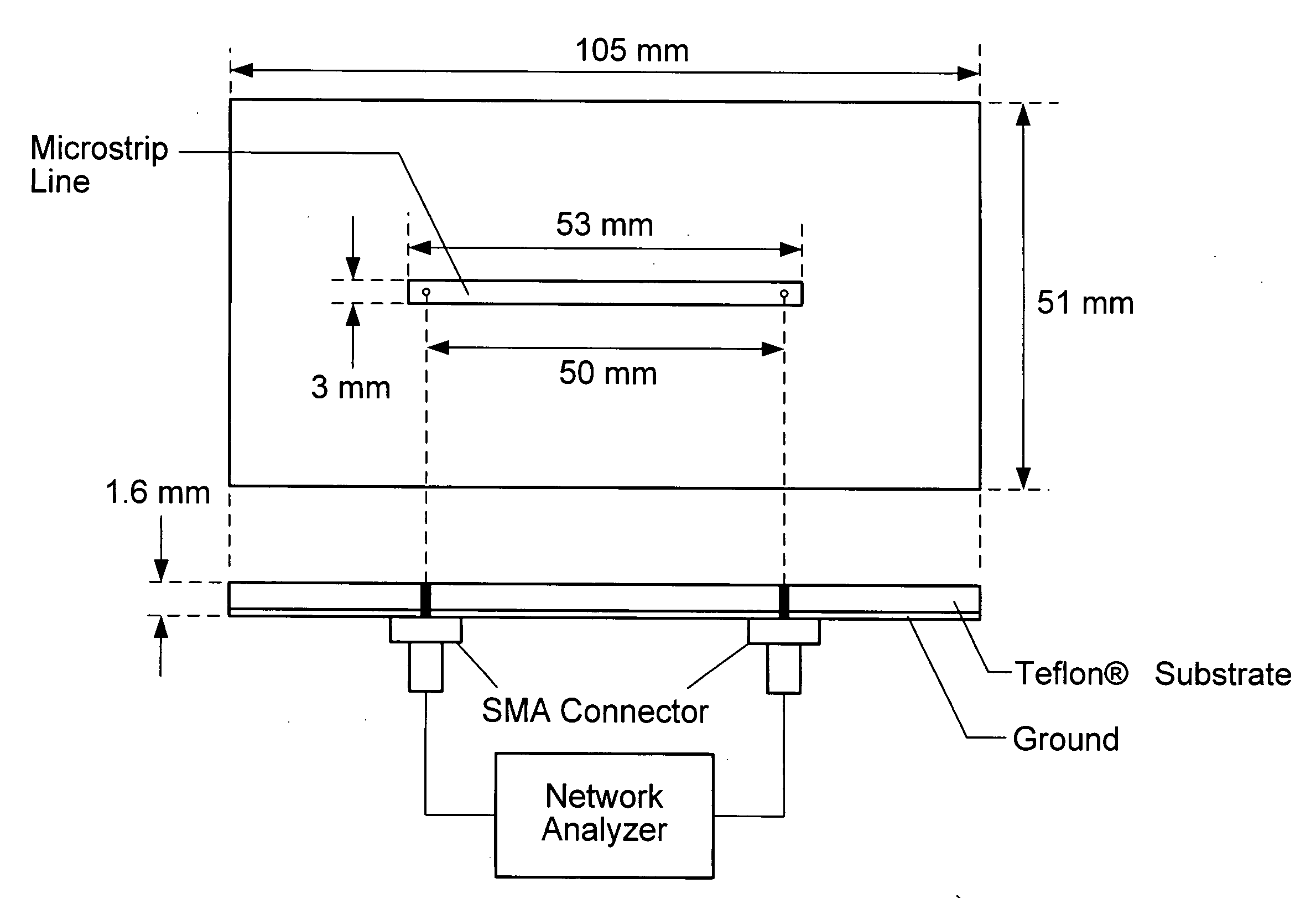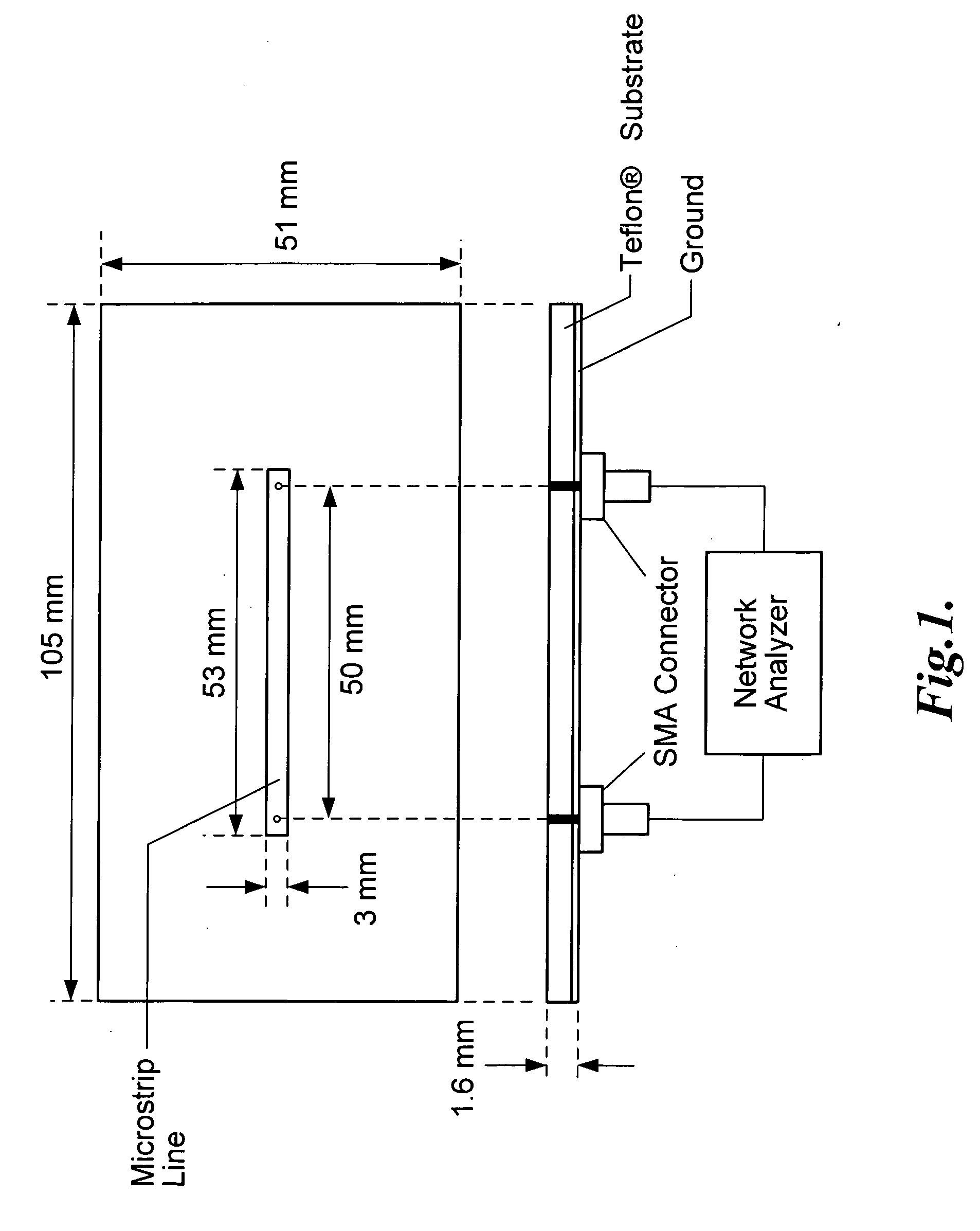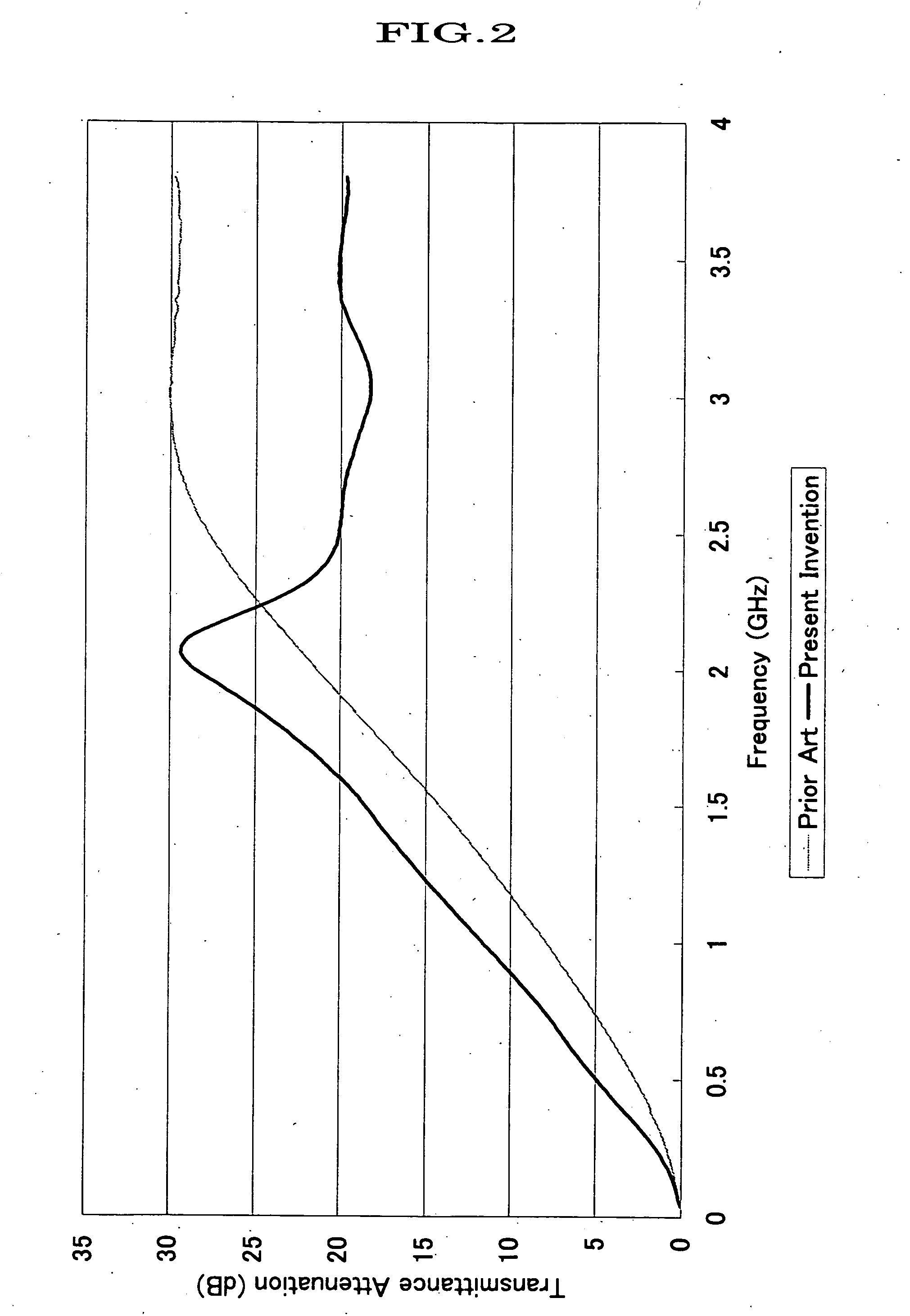Near-field electromagnetic wave absorber
a near-field electromagnetic and absorber technology, applied in the direction of loop antennas, electrical apparatus, antennas, etc., can solve the problems of inability to show sufficient absorption characteristics against a frequency range of several hundred mhz to 1 ghz or more where emi countermeasures, and the method of preparing an electromagnetic wave absorber by dispersing magnetic particles uniformly in the substrate is not easy, so as to achieve easy manufacturing and reduce manufacturing costs.
- Summary
- Abstract
- Description
- Claims
- Application Information
AI Technical Summary
Benefits of technology
Problems solved by technology
Method used
Image
Examples
example 1
[0057] As a substrate, materials described in Table 1 were used. A dispersion solution, with the mass ratio of a carbon black (CB) to a carbon nano-fiber (CNF) described in Table 2, was prepared. The dispersion solution described in Table 2 was applied onto the substrate described in Table 1, while controlling the amount to be applied, and then the applied substrate was dried, to prepare an electromagnetic wave absorber. The surface density of conductive material, i.e. the carbon component, at the surface of the resulting electromagnetic wave absorber was measured.
[0058] The transmission attenuation of the resulting electromagnetic wave absorber was measured in accordance with IEC TC51 WG10 standards. The measurement device was configured with a network analyzer (abbreviated hereinafter as “NA”) and a 50 Ω microstrip line (abbreviated hereinafter as “MSL”) as shown in FIG. 1.
[0059] The electromagnetic wave absorber prepared in size same as the MSL substrate (50 mm×100 mm), was adh...
example 2
[0067]
[0068] An electromagnetic wave absorber was prepared in a manner similar to in Example 1 except that “B” (No. 2 filter paper for production, manufactured by ADVANTEC TOYO KAISHA LTD.) described in Table 1 was used as a substrate, and that “4” (a mass ratio of CB / CNF=1) described in Table 2 was used as dispersion solution.
[0069] The transmission attenuation of the resulting electric wave absorber was measured in the same manner as in Example 1. The thickness of the double-faced tape used in the measurement was 20, 30, 50, 80 μm, respectively, as shown in Table 6.
[0070] Table 6 shows the surface resistivity and the transmission attenuation of the resulting electric wave absorber with the thickness of the double-faced tape used in the measurement.
[0071] Table 7 shows the transmission attenuation against an electromagnetic wave of 1 GHz depending on the thickness of the double-faced tape used in the measurement.
[0072] Further, Table 8 shows the maximum value of reflection S11 ...
PUM
 Login to View More
Login to View More Abstract
Description
Claims
Application Information
 Login to View More
Login to View More - R&D
- Intellectual Property
- Life Sciences
- Materials
- Tech Scout
- Unparalleled Data Quality
- Higher Quality Content
- 60% Fewer Hallucinations
Browse by: Latest US Patents, China's latest patents, Technical Efficacy Thesaurus, Application Domain, Technology Topic, Popular Technical Reports.
© 2025 PatSnap. All rights reserved.Legal|Privacy policy|Modern Slavery Act Transparency Statement|Sitemap|About US| Contact US: help@patsnap.com



